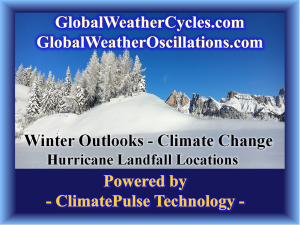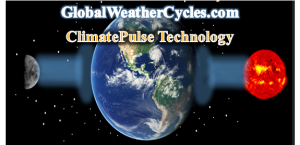2025 Winter Outlook – Europe - North America - Major Change in Weather Patterns Coming
Europe 2025 Winter Will See Major Changes In The Weather Patterns - This will Lead to More Availability of Colder Air For The Upcoming 2024-25 Winter
The chaotic winter of 2024 was caused by several cyclical climate events all occurring at the same time. El Niño events occur cyclically about every 3 to 5 years when ocean water warms rapidly to abnormally warm levels across the tropical equatorial region in the Central and Eastern Pacific. In response to very warm ocean - atmospheric steering currents are altered in the Eastern Pacific and North America - and this typically steers warm wet weather into some areas of North America - and at times into Europe. - this was further exacerbated as the current global warming cycle reached its cyclical 230 year pinnacle. With all of the mentioned climate cycles in place - the stage was set for a chaotic and very memorable weather pattern during the 2024 winter across North America and Europe.
Looking Ahead to The Upcoming 2025 Winter - Earth's ClimatePulse will Cause a Dramatic Weather Pattern Change.
GWO's ClimatePulse Technology tracks historical weather and climate cycles that typically cause fluctuations in weather patterns. All of the tracked cycles recur in conjunction with the electromagnetic earth-moon-sun ClimatePulse Cycles - and can be projected into the future. A more detailed 2025 winter outlook for Europe - United States and Canada are available at www.GlobalWeatherOscillations.com and www.GlobalWeatherCycles.com. Professor Dilley has 3 Podcast Video Interviews in the climate section that will walk you through climate cycles, what drives the cycles – including atmospheric carbon dioxide.
What Will Change Weather Patterns for The 2025 Winter.
Professor David Dilley, senior meteorologist/climatologist Global Weather Oscillations (GWO) – is predicting a big flip in the weather with a very different scenario setting the stage for the 2025 winter. This will all lead to the availability for colder air during the upcoming 2024-25 winter (November 2024 into March 2025). The predictions by Professor Dilley utilize ClimatePulse Technology that is based on cyclical electromagnetic gravitational cycles that produce proven changes in the oceans and atmosphere.
The High Arctic will continue to cool and provide more ice than in the past - and thus colder air will be available. The warm El Niño event of early 2024 will be replaced by a La Niña event that flips the Equatorial Pacific Ocean water temperatures from very warm to much colder than normal. In addition, the Central North Atlantic Ocean will likely be cooler than it has been in recent years and this will set up what is called - Negative Atlantic Oscillation (NAO) that will also be instrumental in altering the weather patterns in Europe during the 2025 winter.
The warm oceanic and atmospheric cycles of 2023-24 will take an abrupt change of course during the summer and set the stage for a very different 2025 winter across Europe and North America. The High Arctic is where Global Warming and Cooling Cycles historically begin and also end. Since the year 800 AD, there have been 6 Global Warming Cycles and 5 Global Cooling Cycles. The global cooling cycles typically begin 200 years following the ending of the prior global warming cycle. The prior global warming cycle ended in the year 1825 - and what is 200 years later - the year 2025.
The transition to cooling takes time - similar to the gradual building of global warming from 2000 into 2024. There are signs that the transition is now beginning in the High Arctic and will gradually filter down to the lower Arctic and mid-latitudes. For two years in a row, the High Arctic has experienced record-breaking cold springs and summers in both 2022 and 2023 - and January of 2024 had its greatest Arctic ice extent in 21 years. In response to the record High Arctic Cold and increased ice extent - the region from Alaska through Central and Northern Canada eastward into Scandinavia and Siberia - experienced a winter not seen in decades – and this is just the beginning .
Temperature of the earth's surface area is recorded by satellite technology - and with oceans covering 71 percent of earth's surface, a colder Pacific Ocean due to a La Niña and a cooler North-Central Atlantic Ocean will cause earth's temperatures to drop from April into December of 2024 - thus the last half of this year will be very different than the record warmth of 2023.
Professor David Dilley
Global Weather Oscillations
+1 352-789-4461
email us here
Visit us on social media:
Facebook
Twitter
LinkedIn
http:/www.GlobalWeatherOscillations.com
Legal Disclaimer:
EIN Presswire provides this news content "as is" without warranty of any kind. We do not accept any responsibility or liability for the accuracy, content, images, videos, licenses, completeness, legality, or reliability of the information contained in this article. If you have any complaints or copyright issues related to this article, kindly contact the author above.


